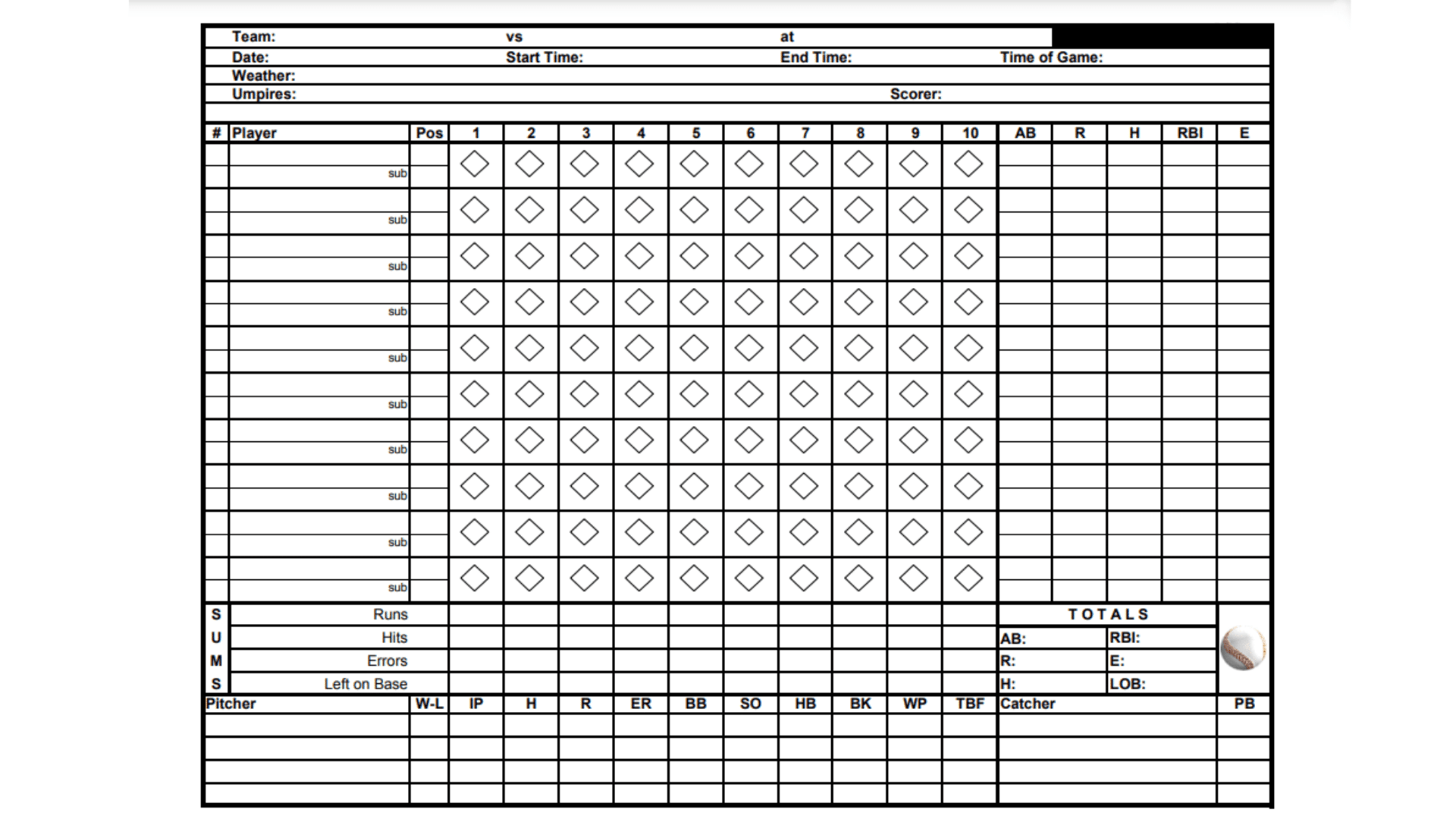Have you ever wondered what all those numbers and symbols mean in a baseball scorebook?
Keeping score turns watching baseball into something special. It helps you follow every play closely and makes the game more exciting.
When you learn how to keep score in baseball, you become part of a tradition that fans have enjoyed for over 100 years. Scoring helps you remember great moments from games you watch.
It also helps you understand the game better. Plus, you’ll have your own record of amazing plays and wins. Learning to keep score might seem hard at first, but it’s actually pretty easy once you know the basics.
Why Learn to Keep Score?
Learning to keep score in baseball makes watching games way more fun and interesting.
When you keep score, you pay attention to every single play instead of just the big moments. You create your own special record of games you’ll never forget.
Keeping score in baseball also helps you learn how teams make smart moves and why certain plays work better than others.
You start to notice patterns in how players hit and how pitchers throw. Additionally, you’re preserving a cherished tradition that baseball fans have observed since the sport’s inception.
Many fans say that once they start scoring games, they never want to stop because it makes them feel like they’re really part of the action.
What You Need to Get Started
Getting ready to score a baseball game is super easy and doesn’t cost much money. Here’s what you need to bring with you:
- Scorecard or scorebook – You can buy one at the stadium or print one online
- Sharp pencil – Never use a pen because you’ll need to erase mistakes
- Good eraser – Clean erasers work best for fixing errors
- Basic knowledge of positions – Know where first base, shortstop, and other players stand
You can also find baseball scorecard apps on your phone, but using paper is more traditional and fun. Paper scorecards also work better because your phone battery won’t die during long games.
Understanding the Scorecard Layout

A baseball scorecard looks like a big chart with boxes everywhere, but it’s actually pretty simple. Each row shows one player from the batting team.
Each column shows one inning of the game. The boxes are where you write what happens to each batter. Every position on the field has a special number from 1 to 9.
The pitcher is 1, the catcher is 2, first base is 3, second base is 4, third base is 5, shortstop is 6, left field is 7, center field is 8, and right field is 9.
These numbers help you write plays quickly instead of writing out long words.
Key Baseball Scoring Symbols & Abbreviations
Learning the basic symbols makes scoring much faster and easier. Here are the most important ones you’ll use:
| Symbol | Meaning | Example |
|---|---|---|
| K | Strikeout | Batter strikes out swinging |
| BB | Walk | Batter gets four balls |
| 1B | Single | Batter hits and reaches first base |
| 2B | Double | Batter hits and reaches second base |
| 3B | Triple | Batter hits and reaches third base |
| HR | Home run | Batter hits the ball over the fence |
| E | Error | Fielder makes a mistake |
| F | Flyout | Batter hits a fly ball that’s caught |
| 6-3 | Groundout | Ball hit to shortstop, thrown to first |
Note: These baseball scoring symbols help you write quickly so you don’t miss any action during the game.
Step-by-Step: How to Score an At-Bat
Follow these simple steps every time a new batter comes up to hit:
Step 1: Write the batter’s name and position number in the correct box
Step 2: Observe the outcome and use the corresponding symbol (K, BB, 1B, etc.).
Step 3: Draw lines inside the box to show how runners move around bases
Step 4: Fill in the diamond shape completely when a run scores
Step 5: Add any extra notes about special plays or errors
Remember, the goal is to tell the story of what happened to each batter. Don’t worry about being perfect – even experienced scorekeepers make mistakes sometimes.
Scoring Defensive Plays
When fielders make outs, you write the position numbers of everyone who touched the ball.
A groundout to shortstop who throws to first base is written as “6-3” because shortstop is 6 and first base is 3. A fly ball caught by the center fielder is “F8” because center field is 8.
Double plays are written with all three position numbers, like “6-4-3” when the shortstop fields it, throws to second base, and second base throws to first.
The most important thing is writing down who made the play so you can remember how the out happened.
Example of a Half-Inning Scored
Here’s how a simple half-inning might look on your scorecard:
| Batter | Result | What Happened |
|---|---|---|
| Player 1 | 1B | Hit a single to right field |
| Player 2 | 6-3 | Grounded out, shortstop to first |
| Player 3 | K | Struck out swinging |
| Player 4 | 2B, R | Hit double, first runner scored |
This shows exactly what happened to each batter and tells the whole story of the inning. The “R” means a run scored, so the team got one point during this half-inning.
Tips for Beginners
Starting to keep score can feel overwhelming, but these tips will help you get better quickly. Focus on the basics first before trying fancy scoring methods.
- Start simple – Only worry about hits, walks, and strikeouts at first
- Use a pencil always – You’ll make mistakes and need to erase them
- Practice at home – Watch games on TV to learn without pressure
- Create your style – Add colors or notes that make sense to you
- Don’t stress mistakes – Even experts mess up sometimes during games
Remember that keeping score should be fun, not stressful. The more you practice, the easier and more natural it becomes during real games.
Conclusion
Learning how to keep score in baseball opens up a whole new way to enjoy America’s favorite sport. You’ll understand the game better, remember moments longer, and connect more deeply to baseball’s history.
Keeping score isn’t about perfection; it’s about enjoying the game more. Each scorebook tells a unique story of the games you’ve watched.
Some of your best baseball memories will be written right there in your own handwriting. The more you practice, the more you’ll love this special tradition.
Ready to start your own baseball scorekeeping adventure? Grab a scorecard at your next game and give it a try – you might discover your new favorite hobby!





































